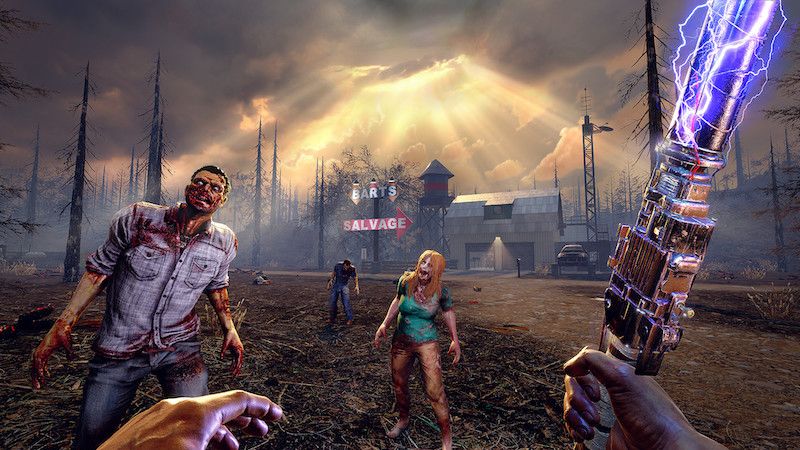7 Days to Die

Editor's Review
7 Days to Die, developed by The Fun Pimps, offers a unique blend of survival, crafting, and zombie horror in an open-world setting. In this review, we will thoroughly examine four crucial aspects of the game: Gameplay Mechanics, Game Content and Depth, User Experience, and Performance and Optimization. Furthermore, we'll highlight distinctive art styles and design choices that differentiate 7 Days to Die from other survival titles.
【Gameplay Mechanics】
7 Days to Die delivers a compelling gameplay experience with its combination of survival mechanics and voxel-based world building. The game encourages players to scavenge for resources, craft tools, and build shelters to withstand the hordes of zombies that come out every 7 days. The dynamic day-night cycle and the sense of impending danger create a constant tension. The game's RPG elements, such as skill progression and character customization, contribute to a satisfying sense of growth and adaptability.
【Game Content and Depth】
The game's content and depth are exemplified by its expansive, procedurally generated world. Players have the freedom to explore diverse environments, ranging from desolate wastelands to sprawling cities, each with its own challenges and resources. The crafting system allows players to create an array of items, from simple tools to elaborate traps. The game's focus on base building and fortifications adds strategic depth, as players must design defenses to withstand the zombie onslaughts.
【User Experience】
7 Days to Die provides a user experience that balances the thrill of exploration and survival with the constant threat of danger. The game's survival mechanics are intuitive, encouraging players to manage hunger, thirst, and stamina while dealing with the zombie threat. The cooperative multiplayer mode allows for shared survival experiences and collaboration on building projects. While the game's UI could be more streamlined, the overall experience is engaging and immersive.
【Performance and Optimization】
In terms of performance and optimization, 7 Days to Die has seen improvements since its early access period. The game now runs more smoothly, with reduced frame rate drops and loading times. However, occasional bugs and glitches may still occur, particularly in more complex base building scenarios. Despite these minor issues, the game's overall performance has enhanced the immersion and enjoyment.
Unique Art Style and Design Choices:7 Days to Die features a distinctive art style characterized by its voxel-based visuals and detailed environmental design. The use of voxels adds a sense of dynamism to the world, allowing players to modify and shape the terrain. The design of the zombies and the decayed landscapes contribute to a haunting and atmospheric experience. The game's day-night cycle and dynamic weather patterns further enhance the sense of immersion, making survival feel truly visceral.
In conclusion, 7 Days to Die offers a captivating and challenging survival experience with its innovative gameplay mechanics, expansive content, and attention to user experience. The game's performance improvements and unique art style showcase the developers' commitment to creating a compelling post-apocalyptic world. If you're seeking a survival title that combines exploration, crafting, and strategic base building, 7 Days to Die stands as a standout choice in the genre.



 steam
steam
SYSTEM REQUIREMENTS
MINIMUM:
- OS: Windows 7 or higher (64-bit)
- Processor: 2.8 Ghz Quad Core CPU
- Memory: 8 GB RAM
- Graphics: 2 GB Dedicated Memory
- DirectX: Version 11
- Storage: 15 GB available space
RECOMMENDED:
- OS: Windows 7 or higher (64-bit)
- Processor: 3.2 Ghz Quad Core CPU or faster
- Memory: 12 GB RAM
- Graphics: 4 GB Dedicated Memory
- DirectX: Version 11
- Storage: 15 GB available space
- TITLE: 7 Days to Die
- DEVELOPER: The Fun Pimps
- PUBLISHER: The Fun Pimps Entertainment LLC
- GENRE: Action
- RELEASE DATE: Dec 14, 2013
- price: $24.99








Comment